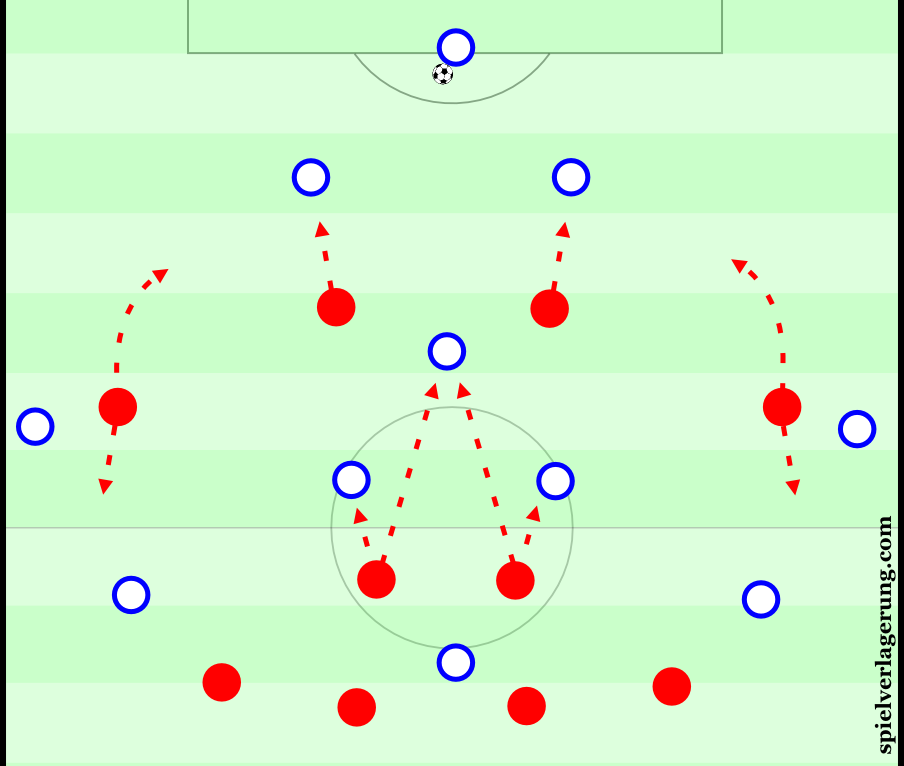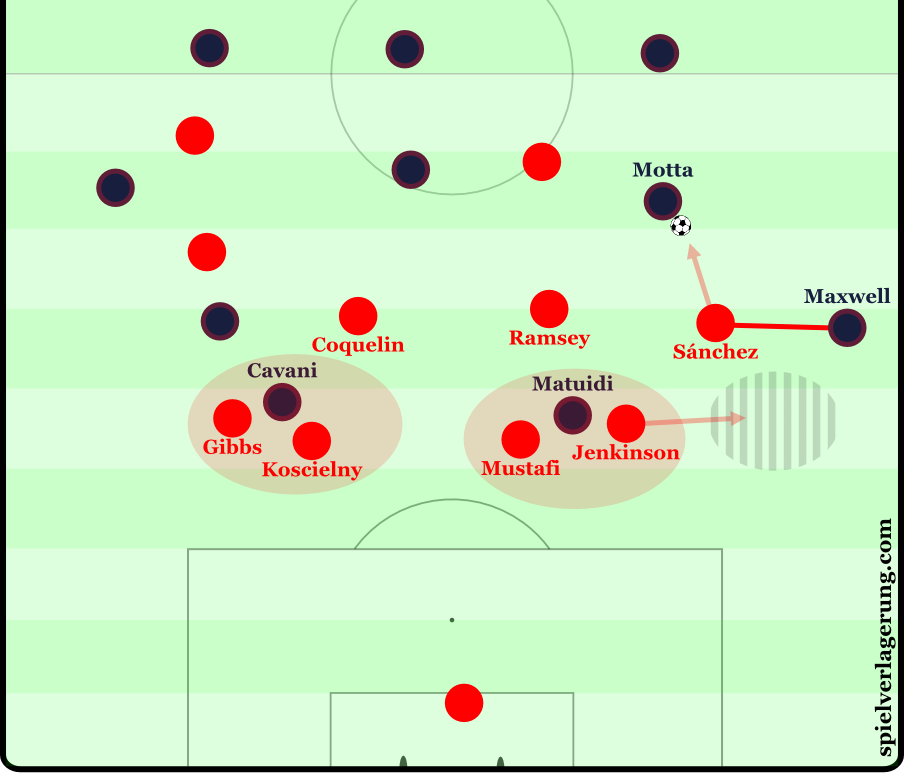Examining Arsenal’s defensive flaws
Since Santi Cazorla suffered another Achilles injury in October, Arsenal have stuttered through a run of four draws (and three wins) in seven games. Much has already been written about how the Gunners struggle in possession but not as much attention has been paid to the struggle Arsène Wenger’s side have out of possession.
Like most sides who like to keep the ball, you can tell Arsenal are generally willing to press high and keep a high line. The problem is when they don’t know how to press efficiently and end up caught between two minds, allowing access to dangerous areas far too easily.
In two big matches over the course of the last week, Arsenal looked to press, struggled, and eventually fell into a deep shape without the necessary compactness and too many man-orientations. The attacking play fell flat on its face as the team couldn’t get out from such deep spaces and, against both Manchester United and Paris Saint-Germain, it became inevitable that Arsenal would concede the opening goal.
Issues in pressing
Particularly with Alexis Sánchez leading the line, Arsenal have been looking to press opposition sides higher up the pitch.
Using Theo Walcott, who is working much harder this season, from the right wing essentially gives Arsenal an asymmetrical shape and two strikers to start a press with. It was the same on Wednesday, when Özil, Alexis, and Giroud formed the first chain of pressing, focussing on the right side of the pitch. Unfortunately for Arsenal, Carl Jenkinson was not able to push forward and close the spaces Alexis left to the side of Aaron Ramsey, giving PSG an easy pass into Matuidi, who was leaving the wing to stand in the left halfspace and outnumber the Arsenal midfield.
In Wenger’s preferred lineup the pace of Walcott and Héctor Bellerín on the right means aggressive positions can be taken up but recovered when the press is beaten. Mesut Özil never seems to exert much energy but positions himself aggressively off the ball and Francis Coquelin, who has been playing as a ball winner from the 8 position rather than the base of the midfield, whirls around and hunts for possession whenever there is a loose pass.
The only big success came against Chelsea, when the press was triggered by poor, slow, sideways passing at the back between players who did not look comfortable on the ball. Other than that game, attempts to press generally end with Alexis Sánchez turning and facing his teammates in exasperation, beckoning them to join him before the opposition creates triangles in the vacated areas behind the first wave of pressing and combine to launch an attack.
Against PSG on Wednesday evening, it became clear that Arsenal intended to press in midfield at the very least but did not know how to.
More to the point, when certain players (Aaron Ramsey, Alexis Sánchez) hoped to engage with opposition players, they hesitated. This is probably because their teammates don’t tend to help them in the press, or appropriately position themselves to cut off passing options because they are man-orientated, rather than ball-orientated.
Passivity
That tentativeness regularly leads to Arsenal relaxing into a passive 4-4-2 shape out of possession, which exposes more issues. With little pressure on the ball and poor vertical and horizontal compactness, good teams can move the ball at ease, biding their time before probing one of the gaps Arsenal will inevitably leave exposed in midfield, defence, or both.
With Arsenal man-orientated, space is poorly managed. It becomes impossible for the two central midfielders to cover all the space that is asked of them to and the team struggles to securely keep possession as a defensive tactic (though that is another matter entirely). The shape of the entire team could do with some training ground work but even just an improvement in defence would have an enormous knock-on effect.
Take the build-up for PSG’s opener at the Emirates, where Thiago Motta had far too much time and space to pick a pass. Arsenal’s defence was so man-orientated that two defenders where each marking one man – Carl Jenkinson had followed Blaise Matuidi into what should be considered Shkodran Mustafi’s ‘zone’, Laurent Koscielny had tracked Edinson Cavani all the way out to the left-back position.
As shown in the graphic, a back four without such pronounced man-orientations and spacing issues would have covered the pitch better, as well as freeing Alexis Sánchez to put pressure on Motta in midfield without leaving the team exposed.
Alexis could easily press Motta, handily on his strong left foot, but is pre-occupied by the run of Maxwell. Too often in English football, wingers follow offensive full-backs and form a conditional back six, something Leicester avoided on their run to the title last season.
Just by slightly improving the defence, Arsenal’s midfield would have a much easier job, it would be easier to press in certain situations (from a mid/low block) and attacks could be launched much more simply, rather than having poor connections even when there is a turnover.
Teams should always seek to be compact and well-spaced but it is even more important without a good pressing game, any pressure on the ball, or paying attention to passing lanes.
Conclusion
A poor defensive shape means Arsenal are poorly positioned and easily pressed, rendering the side almost incapable of launching effective attacks once they have collapsed into their passive defensive shape.
As is so often the case in football, errors and goals are put down to individual errors. While Arsenal could certainly field a more cohesive midfield partnership than Coquelin-Ramsey, the midfield would work much better with more intelligent positioning from those around them.
In order to compete this season, Arsenal need to find a way to press or sit back out of possession without leaving themselves so vulnerable and relying solely on individual talent to make counter-attacking a viable threat.
Lewis Ambrose usually writes for Onefootball, watches too much of the Premier League and may be the biggest Mikel Arteta fan in the world. Follow him on Twitter @LGAmbrose


Keine Kommentare vorhanden Alle anzeigen